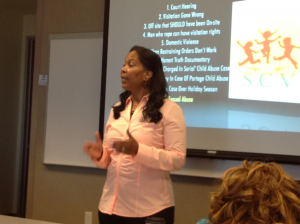- Domestic violence victims lose nearly 8 million days of paid work per year in the US alone—the equivalent of 32,000 full-time jobs.
- Based on reports from 10 countries, between 55 percent and 95 percent of women who had been physically abused by their partners had never contacted non-governmental organizations, shelters, or the police for help.
- The costs of intimate partner violence in the US alone exceed $5.8 billion per year: $4.1 billion are for direct medical and health care services, while productivity losses account for nearly $1.8 billion.
- Men who as children witnessed their parents’ domestic violence were twice as likely to abuse their own wives than sons of nonviolent parents.
- 63% of all boys who commit murder kill the man who was abusing their mother.
- In a national survey of more than 6,000 families in the United States, half of the men who frequently assaulted their wives also frequently abused their children.
- Long-term exposure to battering can result in delinquency, higher rates of substance abuse, propensity to use or tolerate violence in future relationships, and a pessimistic view of the world.
- Short-term effects of children’s exposure to domestic violence can include post-traumatic stress disorder, sleep disturbances, separation anxiety, aggression, passivity, or desensitization to violent events.
- Eighty-five percent of assaults on spouses or ex-spouses are committed by men against women with an estimated 3.3 million children exposed nationally to violence by family members against their mothers or caretakers each year.
- At least 75% of children whose mothers are battered witness the violence.
- In one study, forty-seven percent (47%) of homeless parents reported a history of domestic violence and one in four stated that a primary reason they sought shelter was domestic violence.
- It is estimated that there are 1.35 million homeless children in the US; nearly half of these are under the age of 5.
- Every 9 seconds in the US a woman is assaulted or beaten.
- Around the world, at least one in every three women has been beaten, coerced into sex or otherwise abused during her lifetime. Most often, the abuser is a member of her own family.
- Domestic violence is the leading cause of injury to women—more than car accidents, muggings, and rapes combined.
- Studies suggest that up to 10 million children witness some form of domestic violence annually.
- Nearly 1 in 5 teenage girls who have been in a relationship said a boyfriend threatened violence or self-harm if presented with a breakup.
- Every day in the US, more than three women are murdered by their husbands or boyfriends.


Follow Us!